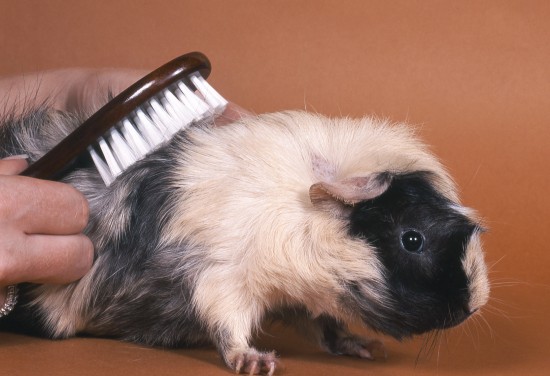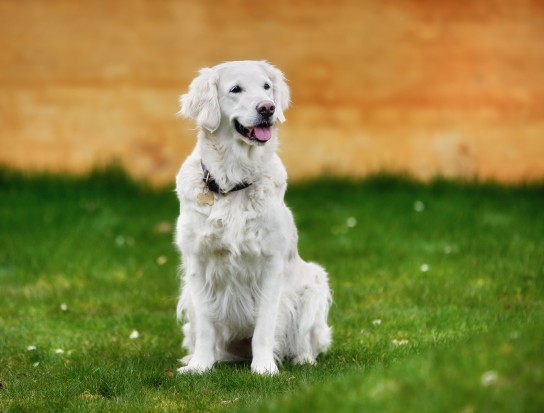
When searching for the best Labrador training methods, Labrador crate training is usually on top of the list. Why? Because it is non-violent! Violence will only make your Labrador aggressive; hence, it must be avoided. By crate training your Labrador, it will be easier to enhance your dog's positive behavior. Through this type of training, you can also correct Labrador behavior problems without having to engage in punishments. If done properly, this training technique will greatly improve your dog's behavior. This is probably the reason why most Labrador owners prefer to undergo crate training as they guide their dogs in becoming well-behaved companions.
Five Tips on Successful Labrador Crate Training:
Tip One: Choosing and selecting the most appropriate crate for your dog. For Labrador crate training to be effective, you cannot purchase just any crate! Remember that every dog is different from one another and this implies different needs as well. You have to choose a crate that meets your dog's needs to ensure the success of the training. You have to take into consideration important factors such as your dog's age, size, and even his personality. In cases of Labradors, they tend to grow rapidly. Their size increases so fast and they would be difficult to handle as they grow bigger. In purchasing your dog's crate, make sure to choose one that is not too small or too large for your pet to move around. As early as possible, you have to make your pet comfortable with his crate. Remember that the crate must be his own private place for safety and security.
Tip Two: Let your Labrador develop a positive attachment with his crate. Labradors also take time to adjust in a new environment and you must be able to guide your pet in every step of the way.You can start Labrador crate training by accompanying him during his first weeks in your home. You can play and train your pet at the same time. Make sure that his crate contains materials that would get his attention. Toys and treats usually attract dogs the most; however, you always have to make sure of your pet's safety. Small sized toys or treats may choke your dog so you must take note about that.
Tip Three: Labrador crate training should not separate your Labrador from you and the family. Remember that your pet will always long for and want your attention once in a while. Even if he is already attached with his crate, you still have to be near him in order to monitor his actions. You cannot let your Labrador stay in his crate for too long without any contact from you. To avoid such, you must find a good location for your Labrador's crate. Choose a location where you can check him at any time. Through this, you can still give your Labrador the chance to socialize with you and the family.
Tip Four: The success of Labrador crate training also relies on your dog's health. Ensure your Labrador's health by providing him with the right nourishment and exercise. Labradors has to stay active; hence, you must take time to walk with your pet or engage in play sessions with him. A 30-minute regular exercise program will do if you cannot stay longer than that. Failing to maintain your dog's health through proper diet and exercise can lead to other serious circumstances such as obesity.
Tip Five: Regular visits to the veterinarian may help enhance the efficiency of Labrador crate training. Taking your Labrador to the vet in a regular basis can be a form of bonding moment for the both of you. By going to an expert in dog behavior, you will have someone to answer any inquiries that you have as you go through the training. Vets can guide you as to where, when and how to go about with crate training your Labrador.
By following the tips mentioned above, you can engage in Labrador crate training on your own. Training methods does not have to be difficult for you and your dog. It only takes a little time and effort in order to help your dog learn what you expect of him. Remember that as a Labrador owner, it is you who is responsible for instilling positive traits in your dog. You are tasked to guide your Labrador in doing what is right and in realizing what is wrong and cannot be done.
Marcus Stephens "The Dog Guy" has owned and trained dogs for over 20 years. He is the founder of the popular website "Labrador Obedience Problems". Get your FREE report that reveals how to engage in successful Labrador crate training at=>
http://www.FixLabradorProblems.com/LabradorCrateTraining
 Jellyfish as Pets
A Jellyfish is a soft-shelled marine creature with a body l
Jellyfish as Pets
A Jellyfish is a soft-shelled marine creature with a body l
 Top Grooming Tips For Guinea Pigs
Top Grooming Tips
Top Grooming Tips For Guinea Pigs
Top Grooming Tips
 The Karakachan Dog - A Rare Gentle Giant
The Karakachan Do
The Karakachan Dog - A Rare Gentle Giant
The Karakachan Do
 How To Deal With Bee & Wasp Stings In Dogs
How To Deal With
How To Deal With Bee & Wasp Stings In Dogs
How To Deal With
 Prostate Inflammation And Associated Problems In The Dog
Prostate Inflamma
Prostate Inflammation And Associated Problems In The Dog
Prostate Inflamma
Copyright © 2005-2016 Pet Information All Rights Reserved
Contact us: www162date@outlook.com